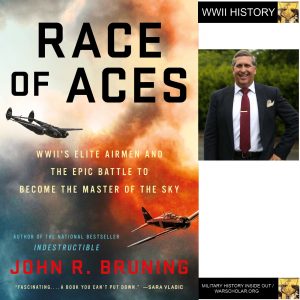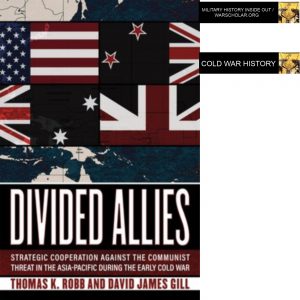Podcast: Play in new window | Download
Subscribe: RSS

John Bruning is a historian with a passion for WWII aviation. He’s written books on the subject and we spoke about his most recent book about the WWII race to be America’s top aviation ace Race of Aces. Check the book out here: https://amzn.to/2Rdem20
0:42 – John talks about how he got into writing on WWII army aviation.
2:47 – John talks about how he structures the story of the five airmen in the book.
4:44 – John talks about how he chose what parts of the story to tell.
7:27 – John talks about the personalities of these airmen.
11:13 – John talks about the Army’s concern with their aces getting shot down.
14:05 – John talks about the Aleutians campaign and its part in this ace race.
17:26 – John talks about the planes involved in the race.
19:21 – John talks about his favorite parts of the book including Gerald Johnson’s romance with his future wife.
24:41 – John talks about the documents he used for his research and who he interviewed.
36:32 – John talks about how his perceptions about General Kinney changed during research.
40:05 – John talks about the champagne prize for winning the ace race.
40:38 – John talks about pilot Charles MacDonald.
44:55 – John talks about the emotional impact researching the book had on him. He relates a story of being in a chinook in Afghanistan.
1:02:45 – John is on facebook at John R. Bruning at the website johnbruning.com and theamericanwarrior.com.
Links of interest
https://www.hachettebooks.com/titles/john-r-bruning/race-of-aces/9780316508643/
https://theamericanwarrior.com/
For more “Military History Inside Out” please follow me at www.warscholar.org, on Facebook at warscholar, on twitter at Warscholar, on youtube at warscholar1945 and on Instagram @crisalvarezswarscholar. Or subscribe to the podcast on Apple Podcasts | Stitcher | Spotify
Guests: John R. Bruning
Host: Cris Alvarez
Tags: military, history, military history, conflict, war, interview, non-fiction book, corsair, marines, history, fighter groups, richard bong, tommy mcguire, neil kirby, charles macdonald, gerald johynson, tommy lynch, 475th, 348th, aleutians, 5th figher command, general kenney, general whitehead, 5th air force, alaska, kiska, P-38, P-39, P-40, planes of fame, 457th, 49th fighter group, hind, japan, das boot, afghanistan, detroit lake, WWII, world war two
Check the book out here.: https://amzn.to/2Rdem20
As an Amazon Associate I earn from qualifying purchases.

